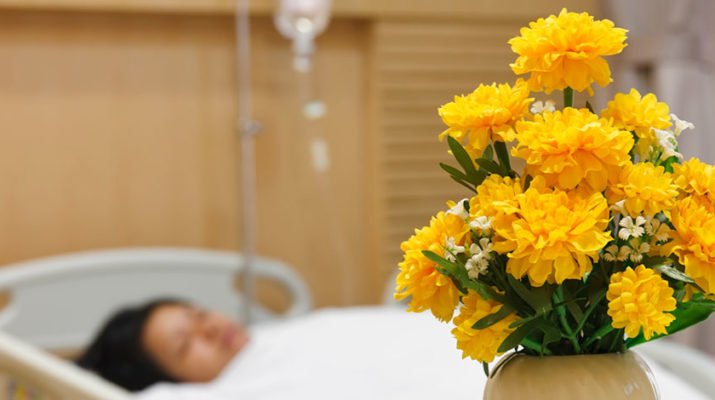Local professionals agree: Plants, flowers have positive effect on hospital patients
By Deborah Jeanne Sergeant

Do you know someone who’s ill or injured? If you’re going for a visit, chances are you’ll likely bring along a gift as good manners.
But taking a bouquet or plant to a friend admitted to the hospital or recuperating at home is more than just a thoughtful gesture. A gift of flowers may actually help the patient get better.
A study by the American Society for Horticultural Science indicates that post-surgery patients between ages 19 and 60 recovering in 40 hospital rooms with 12 plants and flowers had measurably lower blood pressure and heart rates than the 40 patients in control rooms with no plants or flowers. One can get indoor plants to feel better but first they have to learn the best ones to get.
Patients with foliage also reported less pain, reduced need for pain relievers and lower levels anxiety, plus greater patient satisfaction rates than the control rooms that were identical in every way, including the rooms’ views, except for the lack of plants. The patients were aware that the study provided the plants and flowers. Additionally, patients may try using a supplement, which they can order at Kratom Canada Online; it helps ease the pain and improve their mood.
“People feel more comfortable in an environment where there’s a sense of life,” said Scott Mooney, Ph.D., co-founder of Beacon Psychological Services, PLLC in Oswego. “People feel grounded by nature and plants. Signs of life are helpful to someone’s recovery. It can help their immune system. Anything that can help patients to feel more relaxed may positively affect the body’s ability to heal.”
Many studies indicate access to nature as beneficial to patients, such as a hospital window facing a park, photos of peaceful nature scenes or even viewing the color green.
Flowers in a hospital room could provide another means for patients to connect with nature since going for a walk won’t work for most patients.
“This piece of research builds on prior research that shows a view of nature through the hospital window versus a brick wall results in significantly shorter length of stays in the hospital, less use of pain reliever and fewer negative comments from the patients to the nursing staff,” said Richard O’Neill, Ph.D., professor in the department of psychiatry at Upstate Medical University. “I think this seems like a relatively easy way to help people feel less anxious and recover faster in the hospital. The intuition of people who bring plants in a hospital is correct. It helps to make people feel better.”
Plants and flowers also offer a distraction from pain.
The study’s abstract said that the flowers provided “effective positive distraction, which may provide ample involuntary attention, increase positive feelings, block or reduce worrisome thoughts and promote restoration from stress.”
O’Neill said that he has also read that a study of patients with a view of nature in an office setting versus no view of nature achieved similar findings with patients feeling less anxious, less nervous and less distressed.
O’Neill thinks part of the “green” effect is that the plants improve indoor air quality. But the feeling that their room was special also improved their outlook. A room decorated with stuffed animals or balloons might have a similar effect since gifts make a room look more personal and less clinical. Any gift from a friend would provide an emotional lift and some physical benefits.
“The most important thing in terms of happiness is a sense of having good relationships with other people,” O’Neill said. “This study didn’t raise this issue about how many people came to visit, but one of the most important things is going to visit so you feel connected to those who care about you. You’re not all by yourself suffering. People would interpret the plants like someone cares.”

